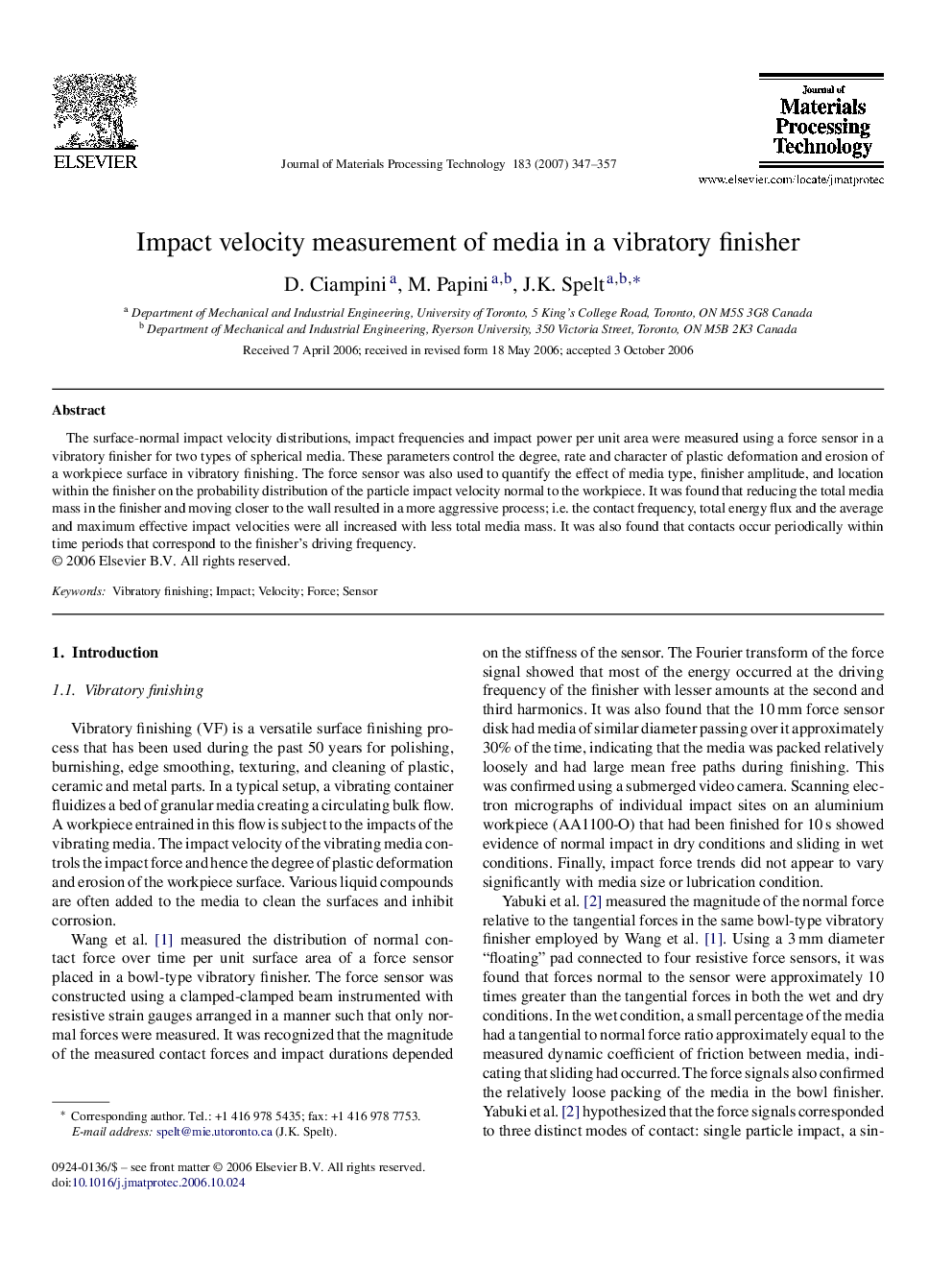| Article ID | Journal | Published Year | Pages | File Type |
|---|---|---|---|---|
| 796391 | Journal of Materials Processing Technology | 2007 | 11 Pages |
The surface-normal impact velocity distributions, impact frequencies and impact power per unit area were measured using a force sensor in a vibratory finisher for two types of spherical media. These parameters control the degree, rate and character of plastic deformation and erosion of a workpiece surface in vibratory finishing. The force sensor was also used to quantify the effect of media type, finisher amplitude, and location within the finisher on the probability distribution of the particle impact velocity normal to the workpiece. It was found that reducing the total media mass in the finisher and moving closer to the wall resulted in a more aggressive process; i.e. the contact frequency, total energy flux and the average and maximum effective impact velocities were all increased with less total media mass. It was also found that contacts occur periodically within time periods that correspond to the finisher's driving frequency.
